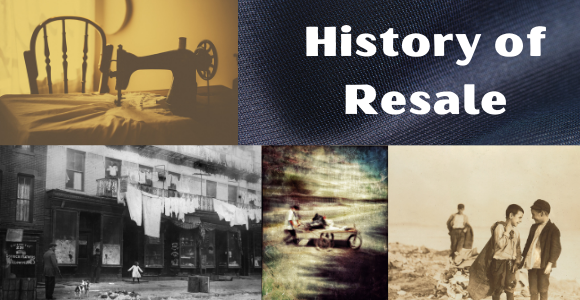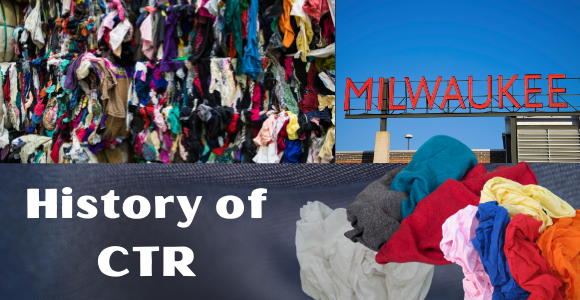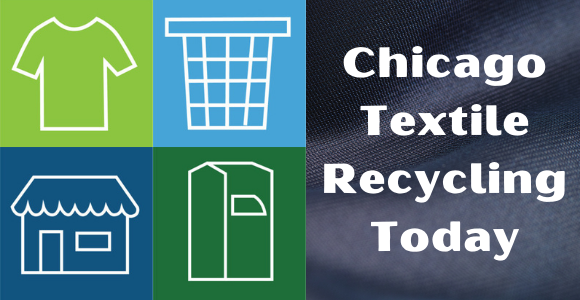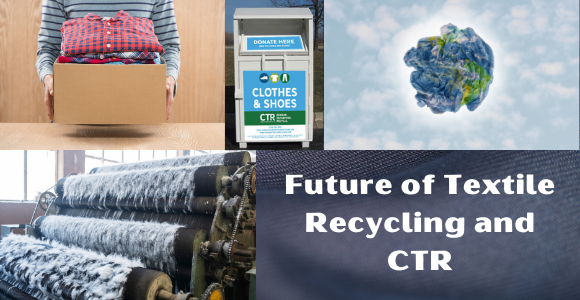 Our Company
Our Company
The Fate of Fabric Through the Years

Have you ever wondered when resale and charity shops began? What need necessitated their foundation as well as the foundation of textile recycling? And how did they grow to where they are today? This blog aims to answer some of those questions behind the history of resale in our country and the needs it fills in our modern day.

History of Resale
While donating to the poor dates back millenia, the idea of owning too much stuff and donating one’s excess belongings dates back at least two centuries. In the early to mid-1800s,
“Rag and bone men would travel through city streets on foot, usually carrying a large bag over their shoulder. They rarely had any form of transport and were generally very poor people trying to eke out a living from collecting anything that they thought might have a resale value such as old rags, cloth, bones and metal.”
In regards to the resale of cloth, “if the rag gatherer could collect (and dry) decent white rag in good condition, he could sell it to local cloth traders for around 2 to 3 pence per pound, with coloured cloth fetching about 2 pence per pound.” This idea of cleaning and reselling wiping rags for profit is what inspired many companies, such as Wipeco, Inc. into what we are today. For more history of rag and bone men, read here.
In February 1932, an article was published stating “the average American home had fifteen dollars’ worth of unused goods in the attic, and to most Americans those unused items were a ‘burden, contributing nothing to their welfare or happiness.” (Minter, “Secondhand: Travels in the New Global Garage Sale”, p 49) Since then, overconsumption and the need for donation centers has grown tenfold.
Other resale outlets started around the same time as rag and bone men. In 1865, “the Salvation Army was founded to evangelize to the urban poor of London” (Minter, p 50). It began by employing “the city’s indigent to collect, repair, and sell unwanted goods.” By 1897, it had expanded to New York.
Around the same time, Goodwill began when “the Reverend Edgar James Helms took over Boston’s Methodist Morgan Chapel and began a program to collect and repair clothes in local neighborhoods.” (Minter, p 50) The organization passed out burlap coffee bags to collect items from locals, which were later renamed “goodwill” bags. This led to the name of the present day organization.
Over the last two centuries, resale stores have sprouted up all around the world, each with its own mission to support local charities and nonprofit organizations serving those in need.
A number of these resale and thrift stores were founded by evangelicals to reach out to the poor in both converting them to Christianity AND serving their basic needs. Today, many resale programs remain true to this mission of being Church-led outreach oriented while many more have been borne from secular or other religious programs focusing on serving the needs of those in their communities.

Resale Today
So what does resale look like today? What missions do resale stores serve, and how do they reach these missions?
In his book, Minter states that Goodwill is “a crucial civic institution.” (p 52) Though he is talking specifically about Goodwill, this is true of all nonprofit mission-oriented resale organizations. From job training to furthering education in communities to caring for the homeless and the poor to providing much needed jobs, the entire resale industry is one that is vital to our country.
While larger resale chain stores serve missions previously discussed, smaller locally-owned resale stores have a variety of missions and populations they aim to help as well. When researching these stores in the Chicagoland area, some of the missions that came up were: providing therapeutic care for children who have suffered abuse or neglect, serving the extreme poor in Chicago, a stepping stone for those coming out of incarceration or substance abuse, funding care for the uninsured and under-insured, serving families in need, and supporting HIV/Aids testing.
From helping the environment to decreasing waste to supporting those in need, the benefits of buying secondhand go on and on. Chicago Textile Recycling works in conjunction with local resale stores in pursuing those missions they serve.

History of Chicago Textile Recycling
For the last sixty years, Wipeco, Inc. has accepted textile donations, recycling them, and selling used textiles as wipers for janitorial and sanitation supplies throughout Chicagoland. In the 1980’s our sister company CTC Supplies (formerly Continental Textile Company) opened as a full-service textile grader in Milwaukee. With over 60 employees, Continental Textile Company sorted hundreds of thousands of pounds of used clothing annually. Wipeco, Inc. worked in tandem with this company by purchasing and cutting wiping-cloth grade items and selling them to manufacturing facilities.
After years of successful operations, Continental Textile Company was forced to change direction as the global economy advanced and costs of high labor and being far from international ports made it no longer finally advantageous to operate. The company rebranded to CTC supplies and began focusing on wiping rag sales and used clothing consolidation and brokerage. CTC shut down the majority of the grading operation, and Wipeco, Inc. stopped a bulk of the cutting, focusing instead on packaging and distribution of wiping cloths. During this time, Wipeco continued to maintain a small resale store pickup program and a laundry recycling program.

Chicago Textile Recycling Today
In 2012, the collection side of operations picked back up with the creation of “Chicago Textile Recycling.” For the past eight years, we have grown to consolidate donations from over 40 local resale stores and service various textile collection bins through the Chicagoland area.
“Chicago Textile Recycling provides textile recycling outlets and fundraising opportunities for area organizations, businesses and municipalities. By collecting used clothing, shoes, and household items for reuse and recycling, Chicago Textile Recycling diverts over 2.5 million pounds of waste from area landfills annually.”
Chicago Textile Recycling contributes to local resale stores in their pursuit to support local organizations and missions through consolidation and helps to educate the general public on the importance of textile recycling to benefit our planet and keep textiles out of landfills.

The Future of Textile Recycling and CTR
As awareness continues to grow around the problems of fast fashion and improperly disposing of textiles, many are attempting to create solutions in the industry and raise awareness so that the general public can be a part of the solution. From designers utilizing fabric scraps to entrepreneurs and inventors creating machines to recycle textiles into new fabrics to volunteers pushing toward cleanups and recycling education, the future of textile recycling appears bright.
New companies and programs are growing daily to educate and promote resale over disposal of worn clothing, and as the general public grows in awareness around the options for recycling their textiles, there is much hope that fewer and fewer will be sent to landfills. This awareness helps to further our mission to support local resale, create wiping rags for manufacturing facilities and educate the public around the benefits to our planet of recycling textiles.